
The cost to renovate your lawn depends on the extent of the damage. Our guide will show you how much lawn renovation costs.
Take the fuss out of lawn care


If you’re tired of the investment required to sustain a grass lawn, want to cut down on your environmental impact, or are simply ready for a yard revamp, you’re in luck. There are many low-maintenance lawn alternatives that can replace a stretch of turf. Check out these 16 grass alternatives to inspire you to transform your lawn into an alluring, no-fuss outdoor space with the help of artificial grass installers.

Artificial grass is a great lawn replacement because it looks like grass, minus the maintenance. This alternative is popular for its water conservation and the ability to look bright and green all year round. Just keep in mind that the success of your artificial grass will depend almost entirely on the quality of the product you choose and the expertise of the installation.
| Pros | Cons | Best Growing Conditions |
|---|---|---|
| Easy maintenance (no watering, no mowing) | Absorbs heat | Choose varieties native to your region |
| Durable |
With any of these options, you’re sure to revitalize your outdoor space with a fresh look and cut down on yard maintenance. To get the most out of a revamped lawn, make sure to enlist the help of a local artificial grass installer early on in the process.

Also known as moneywort, creeping Jenny is an evergreen perennial, low-growing plant with lime-green leaves on winding stems. Often planted in pots to spill over the sides, this plant can also wrap around stepping stones to create a charming and whimsical path. You can trim it occasionally if you want, and creeping Jenny can make for one of the most visually appealing ground covers.
| Pros | Cons | Best Growing Conditions |
|---|---|---|
| Easy maintenance (no mowing necessary, can prune to keep looking tidy if desired) | Requires some regular watering and fertilizing | Low-lying areas |
| Grows quickly | Invasive species in some states | Moist soil |
| Sun to partial shade |

Red creeping thyme is an evergreen plant with bright, red-purple flowers that bloom in early summer. This ground cover sprawls to form a close-knit mat over the ground. Like creeping Jenny, it can be a great option to plant around a stone path or walkway. As a bonus, a red creeping thyme lawn gives off a sweet aroma and is even edible, which is perfect if you love gardening.
| Pros | Cons | Best Growing Conditions |
|---|---|---|
| Hardy (drought-tolerant, deer-resistant, tolerates foot traffic) | Pricey | Dry areas |
| Little to no mowing (can prune to keep looking tidy if desired) | Takes time to establish | Well-draining soil |
| Bright color | Full sun | |
| Edible | ||
| Attracts pollinators |
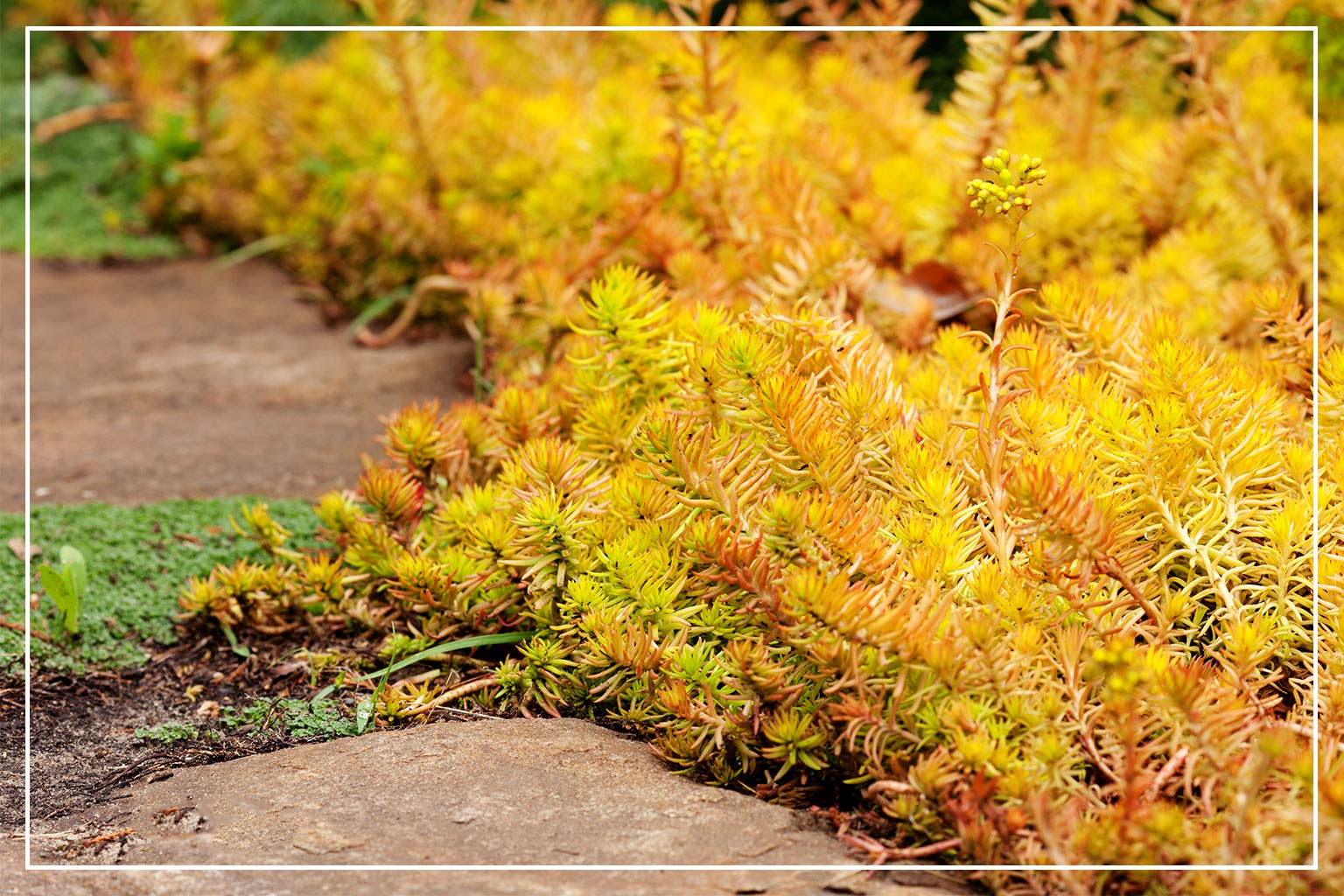
Stonecrop succulents, also known as sedums, are hardy plants with thick leaves that store moisture, allowing them to thrive in hot, dry regions. They come in a variety of colors, from shades of green and blue to purple, and add perfect texture in rock gardens, paths, and hilly yards.
| Pros | Cons | Best Growing Conditions |
|---|---|---|
| Grows well in low-nutrient soil | Takes time to establish | Hot, dry areas |
| Requires little water | Well-draining soil | |
| Full sun |
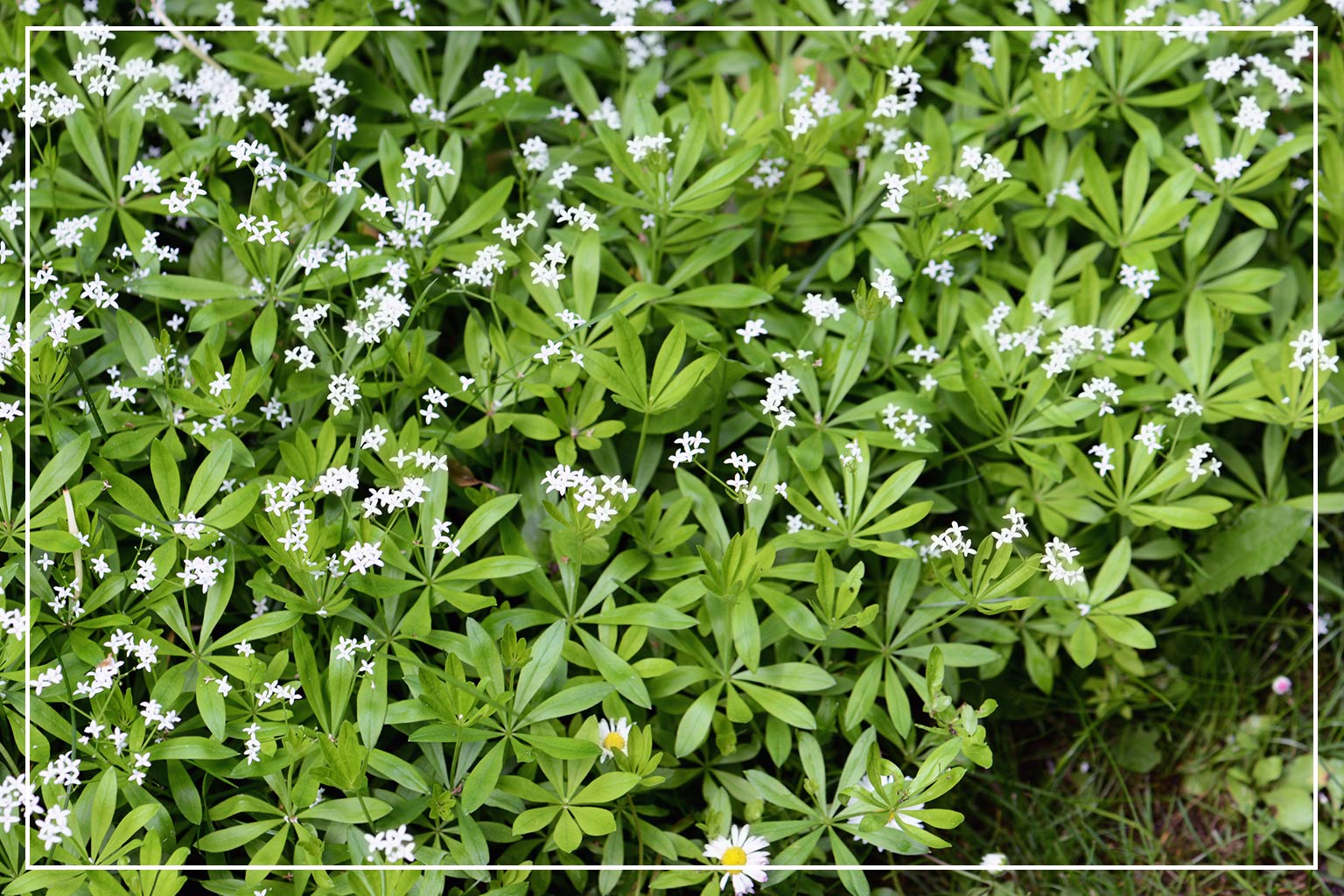
Sweet woodruff is a bright green, low-growing plant with star-shaped leaves and small white flowers when in bloom. Great for narrow passageways, paths, or a sweeping carpet of white flowers over a whole lawn, sweet woodruff is also an edible herb with a fresh scent.
| Pros | Cons | Best Growing Conditions |
|---|---|---|
| Easy maintenance (little to no mowing, little to no watering, no fertilizing, spreads quickly) | Prefers shade | Cool areas |
| Weed-resistant | Low sun |
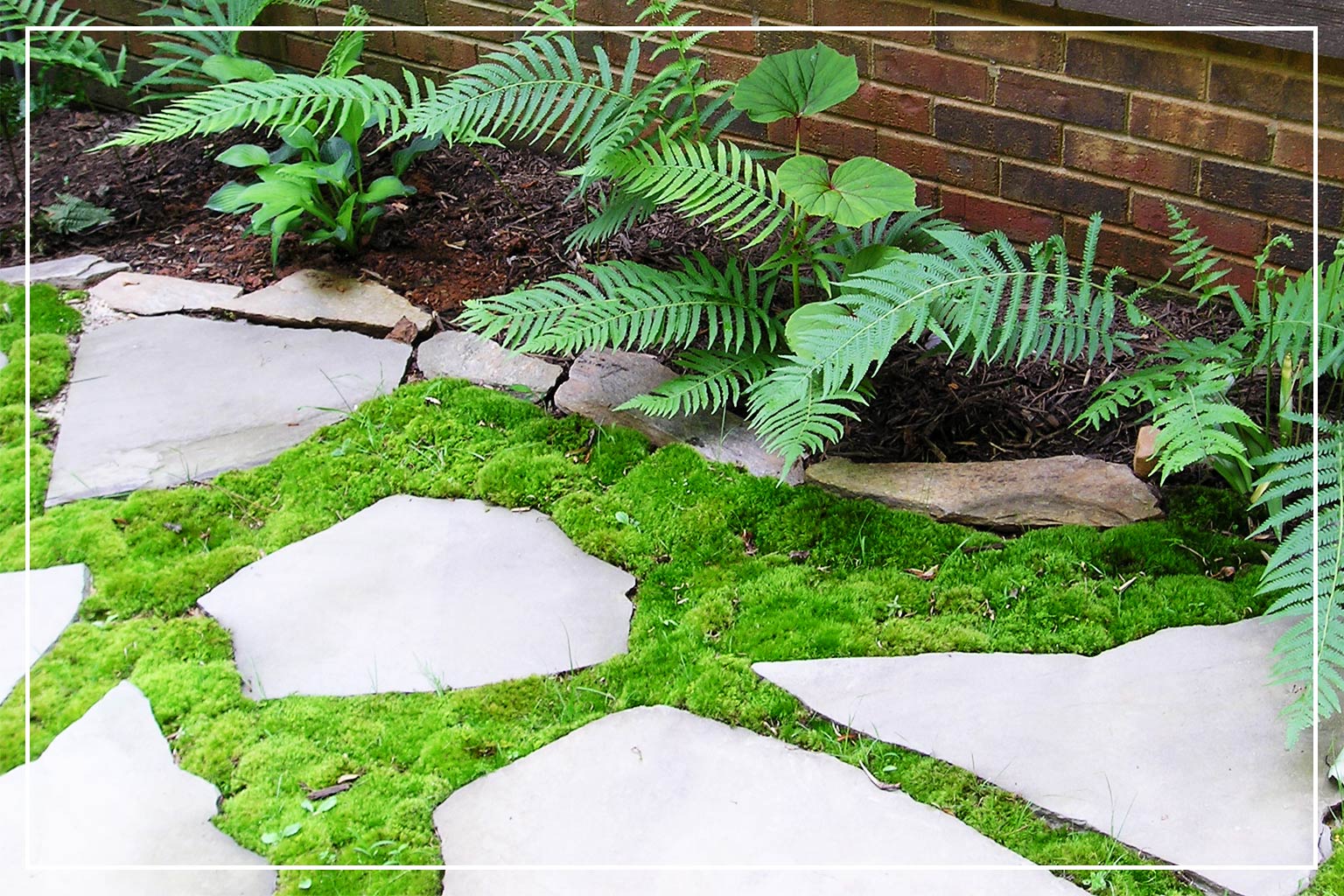
If you’ve never thought of moss as a lawn alternative, we get it. But it’s worth knowing that it can create a truly intriguing look for your ground cover. Once it’s given time to establish and spread, moss will form a soft, springy-textured lawn with a rich, green color. Consider consulting with your local artificial grass installer before spreading moss across areas of your lawn.
| Pros | Cons | Best Growing Conditions |
|---|---|---|
| Easy maintenance (no mowing, no fertilizing) | Needs watering | Many species need cool, shady areas to thrive, but can find varieties native to your specific region |
| Grows quickly and on different surfaces like rock, soil, and tree bark | Can withstand only moderate foot traffic |
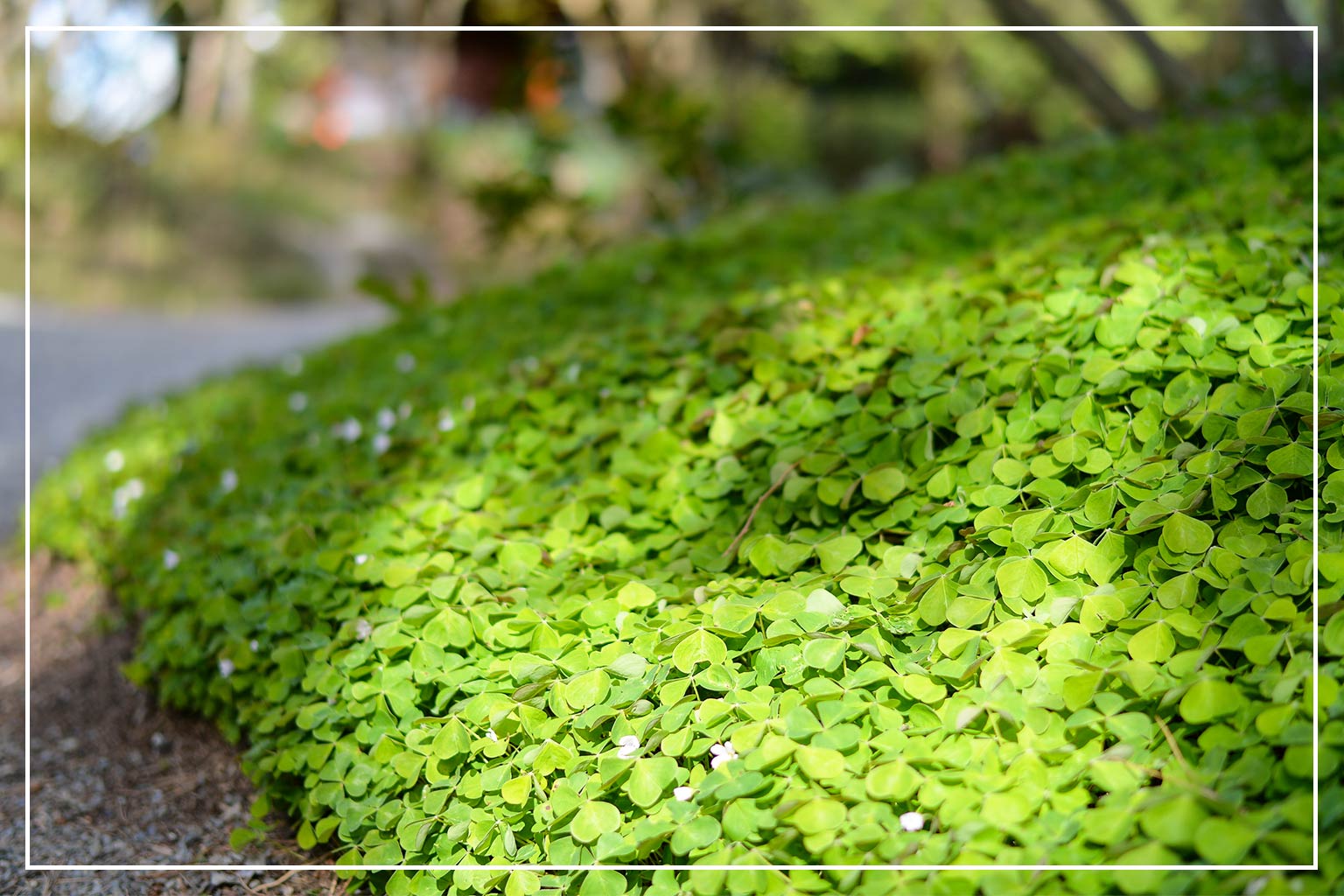
Up until the mid-20th century, clover lawns were actually included in common seed blends for lawns. Today, many are re-embracing clover as a lawn alternative because of its nitrogen-fixating properties, which enrich the soil and surrounding plants. With its white flowers, Dutch white clover is a popular option, while micro-clover has smaller leaves, flowers less, and creates a more uniform look.
| Pros | Cons | Best Growing Conditions |
|---|---|---|
| Easy maintenance (little watering, little mowing, no fertilizing) | Can take a while to establish (need to keep moist and pull weeds) | Can grow in a range of soil types and sun levels |
| Hardy (drought-tolerant, won’t discolor from pet urine, thrives in low-quality soil, green year-round) | Somewhat high maintenance (can stain clothing more than grass, may need reseeding every 2–3 years) | |
| Inexpensive | Can’t withstand high-foot traffic areas unless combined with grass | |
| Soil-enriching | Attracts deer and is pest-resistant | |
| Attracts pollinators |
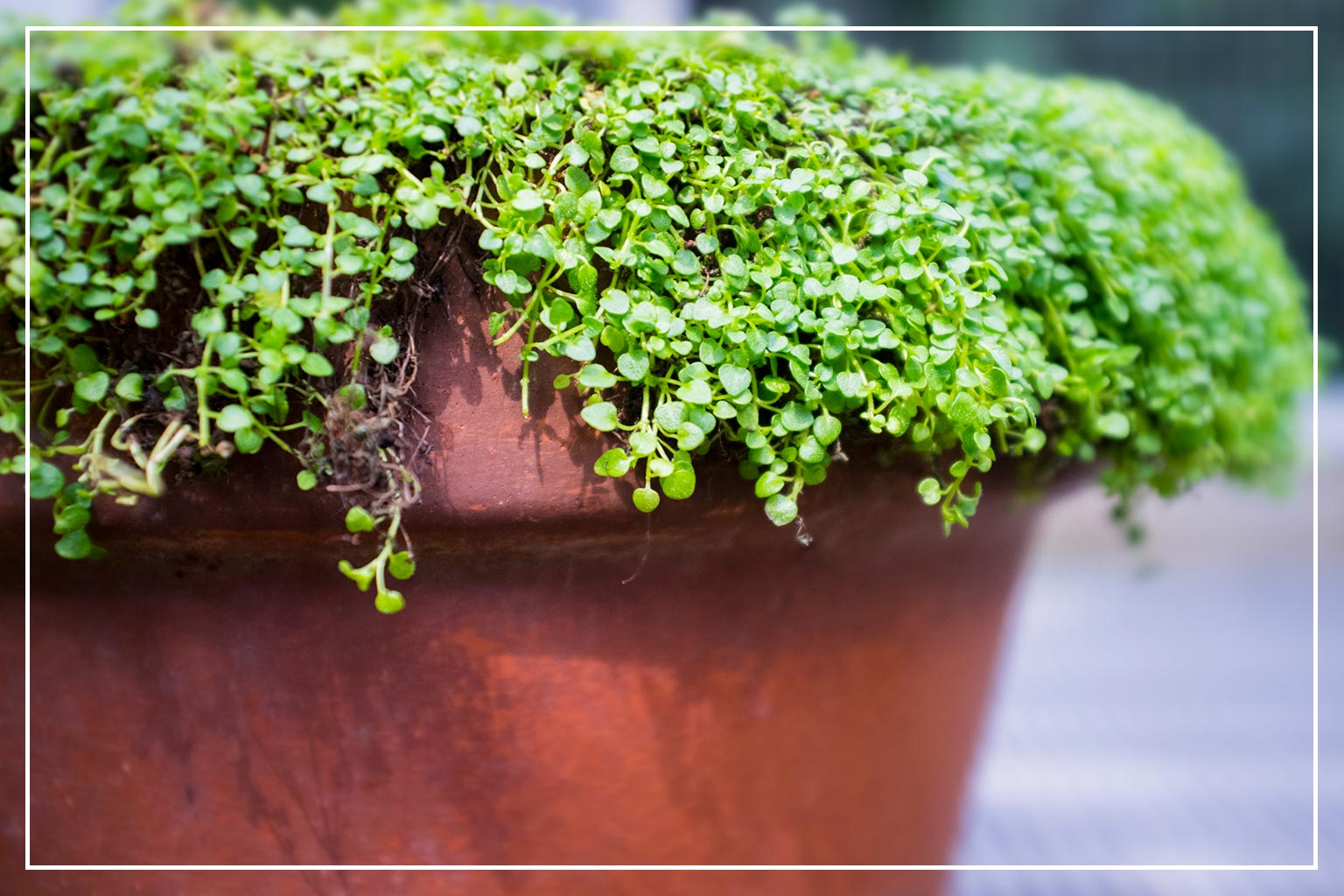
Corsican mint is a low-growing plant with small, bright green leaves and tiny flowers that bloom in early summer. With a pleasant, minty aroma, this ground cover can grow in diverse soil types. Plus, it works well around pathways, and for the resourceful gardener, it’s useful for culinary purposes.
| Pros | Cons | Best Growing Conditions |
|---|---|---|
| Tolerates mild foot traffic | Needs regular watering | Moist |
| Grows quickly | Needs fertilizing | Well-draining soil |
| Edible | Full to partial sun |
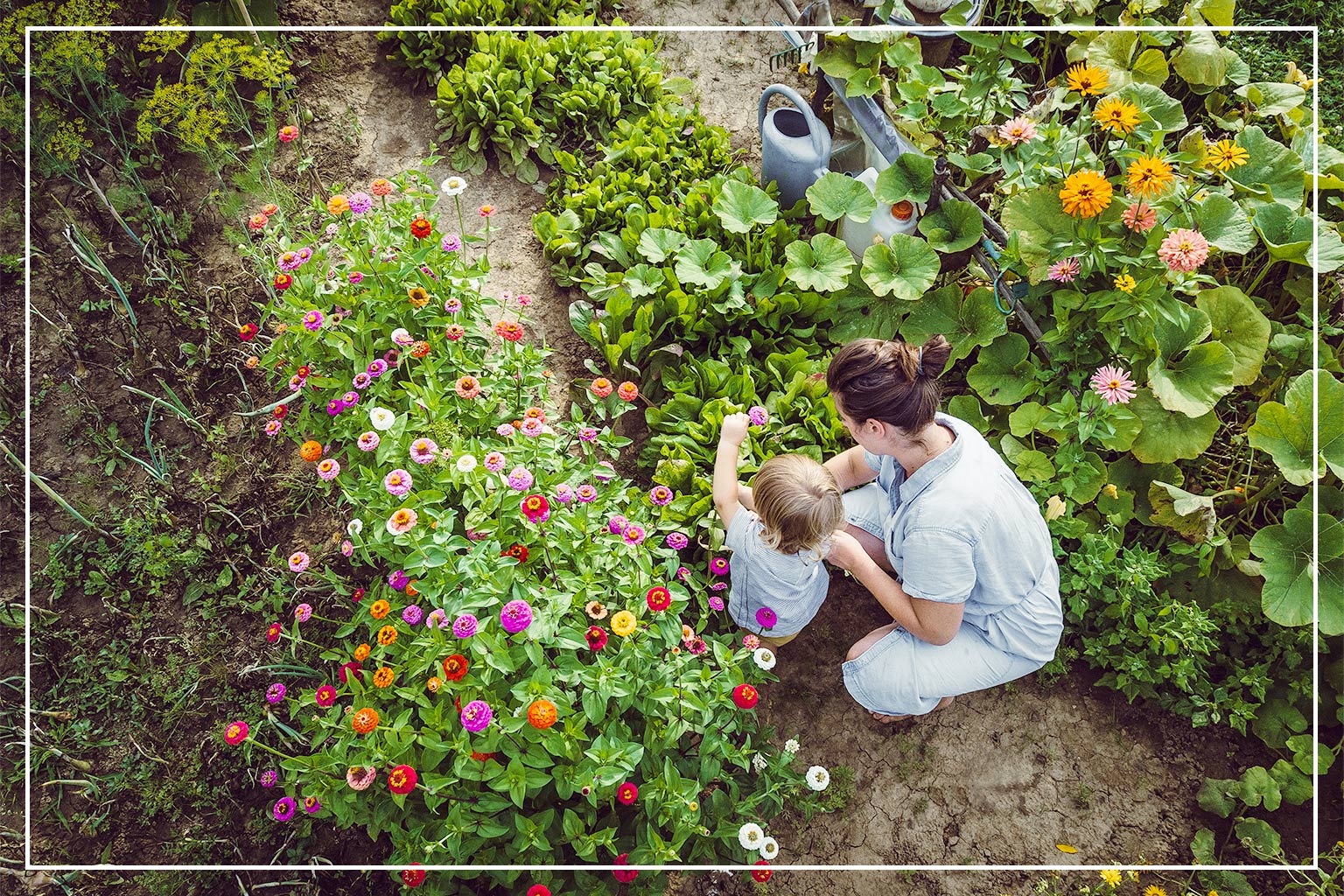
Because native flowers are adapted to the soil conditions of a particular region, they require very little fertilizing. Native plants are scenic and provide nectar for important pollinators like bees, hummingbirds, and butterflies. Choosing just a few colorful varieties will keep things low fuss. Plus, they’ll look nice in an “island” around a tree or flower bed. Get in touch with your local nursery to find the best native perennials in your area.
| Pros | Cons | Best Growing Conditions |
|---|---|---|
| Colorful | Needs regular watering | Choose varieties native to your region |
| Easy maintenance (no mowing, little to no fertilizing) | ||
| Attracts pollinators |

Like native perennial flowers, shrub beds native to your region can bring beautiful visual interest, texture, and unique shapes to your lawn. Shrub beds can stand alone or pair well with flowers as part of a flower bed.
| Pros | Cons | Best Growing Conditions |
|---|---|---|
| Colorful | Needs regular watering | Choose varieties native to your region |
| Easy maintenance (no mowing, little to no fertilizing) | Requires trimming |

Ornamental grass types such as fescue, blue oat, fountain, and muhly grow into tall, fountain-like shapes that make compelling additions to any landscape. There are many of these versatile grasses to choose from, and they are easy to contain without spreading out of control. Simply trim them back each season to encourage new growth.
| Pros | Cons | Best Growing Conditions |
|---|---|---|
| Easy maintenance (no mowing, won’t spread out of control) | Needs regular watering | Grows well in most soils |
| Drought-tolerant | Requires seasonal trimming | Most prefer sun (will differ by species) |
| No foot traffic | ||
| Some varieties are pest-resistant |
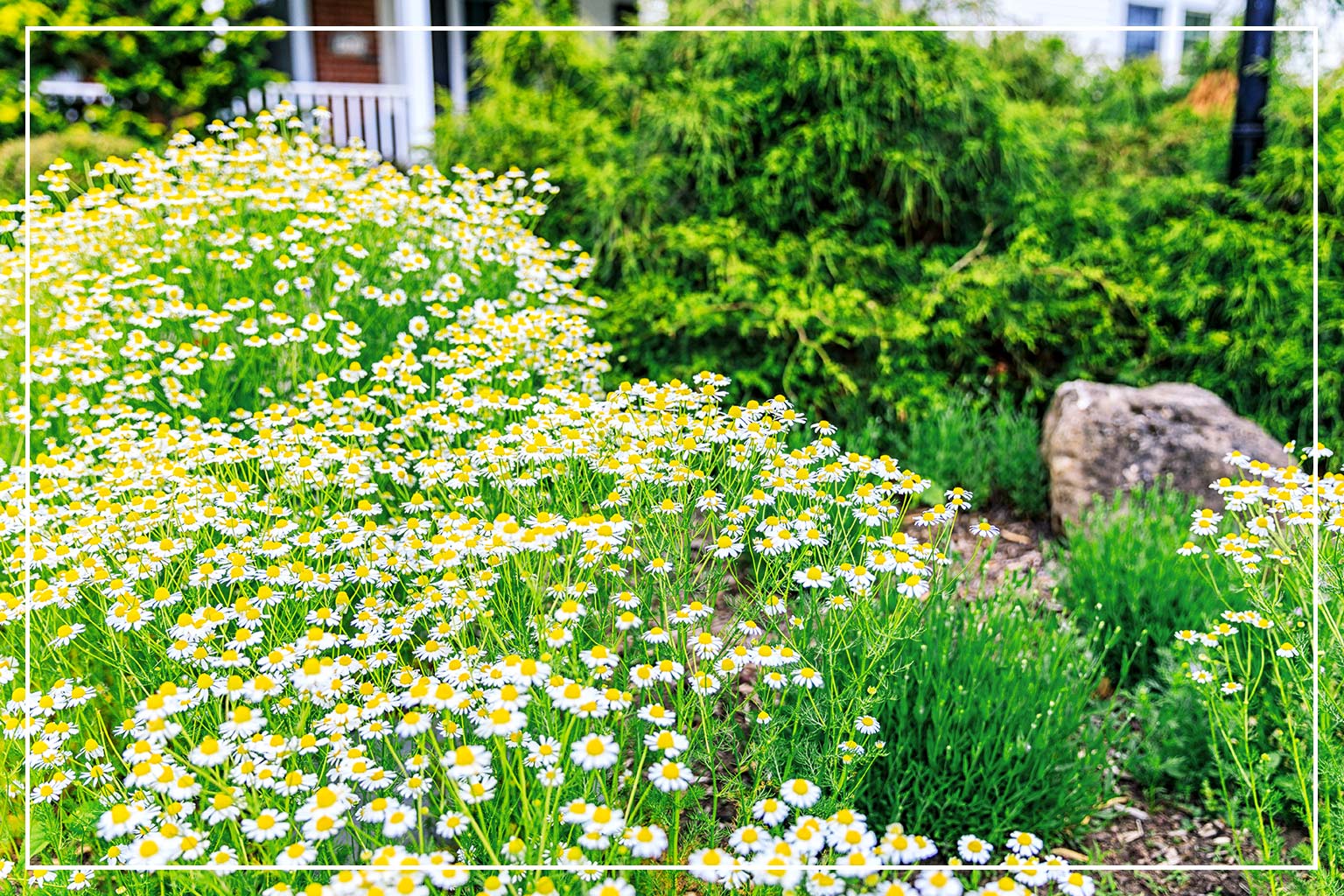
Once established, Roman chamomile spreads quickly to form a short, neat lawn. Chamomile grows well in difficult-to-manage areas, such as a sloped yard, and is a great source of nitrogen for the surrounding soil. When in bloom, a chamomile lawn will boast white flowers with a pleasant aroma.
| Pros | Cons | Best Growing Conditions |
|---|---|---|
| Easy maintenance (little to no mowing, grows quickly) | Little watering | Partial to full sun |
| Soil-enriching (good source of nitrogen) | Some varieties are toxic to pets | |
| Drought-tolerant | ||
| Aromatic |

Snow-in-summer is a beautiful perennial that can cover partial areas of a lawn. Known for its stunning silver leaves, the plant also blooms in summer to form a blanket of thick, white flowers. As the name suggests, this plant can refresh your lawn with the wintery aesthetic of a blanket of snow.
| Pros | Cons | Best Growing Conditions |
|---|---|---|
| Hardy (can grow in poor soil, drought-resistant) | Needs water when establishing | Dry areas |
| Spreads quickly | No foot traffic | Well-draining soil |
| Invasive in some areas | Full sun |
From average costs to expert advice, get all the answers you need to get your job done.

The cost to renovate your lawn depends on the extent of the damage. Our guide will show you how much lawn renovation costs.
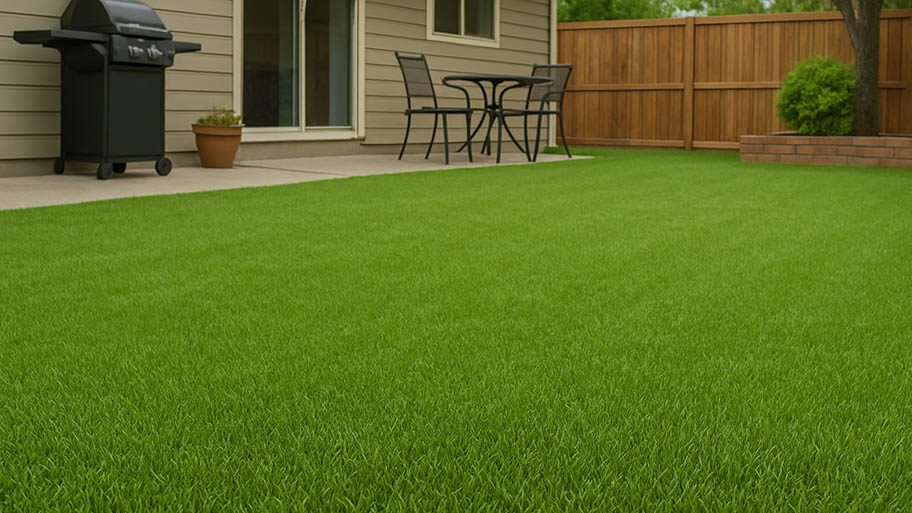
Artificial grass is a low-maintenance alternative to traditional turf. Learn how much artificial grass installation costs and what affects your price.

How much it costs to rent a lawn aerator depends on what kind you rent and how long you rent it for. Read on for the full details.

Spot common warning signs of too much nitrogen in the lawn and learn how to fix damage from overfertilizing or pet urine to keep grass green and healthy.
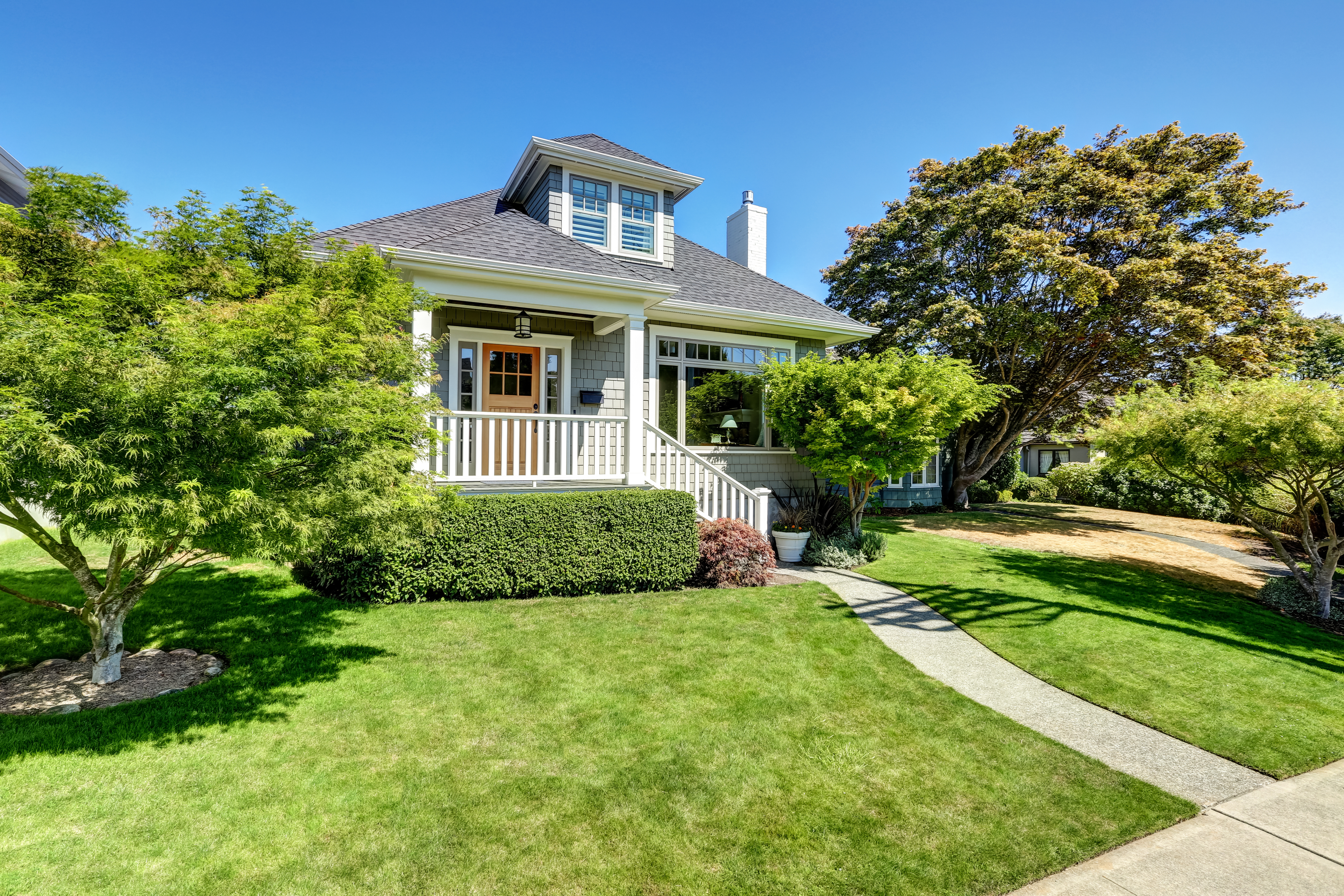
What is hydroseeding? Our guide explains how this landscaping technique can give you a beautiful green lawn in just weeks.

How does your garden grow? With these nine tips for raised beds, they’re sure to be elevated—both in height and quality.